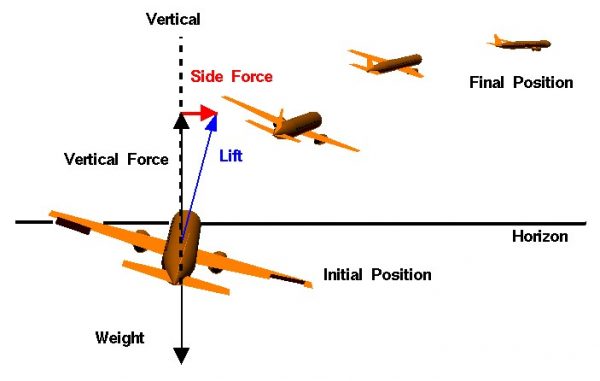Turns
Banking Turn
A fundamental aircraft motion is a banking turn. This maneuver is used to change the aircraft heading. The turn is initiated by using the ailerons or spoilers to roll, or bank, the aircraft to one side. On the figure, the airliner is banked to the right by lowering the left aileron and raising the right aileron. The lift of the wings of the aircraft is a vector quantity which is always directed perpendicular to the flight path and perpendicular to the wings generating the lift. As the aircraft is rolled, the lift vector is tilted in the direction of the roll. We can break the lift vector into two components. One component is vertical and opposed to the weight which is always directed towards the center of the earth. The other component is an unopposed side force which is in the direction of the roll, and perpendicular to the flight path.
Motion
As long as the aircraft is banked, the side force is a constant, unopposed force on the aircraft. The resulting motion of the center of gravity of the aircraft is a circular arc. When the wings are brought level by an opposing motion of the ailerons, the side force is eliminated and the aircraft continues to fly in a straight line along a new heading. Notice that the rudder is not used to turn the aircraft. The aircraft is turned through the action of the side component of the lift force. The rudder is used during the turn to coordinate the turn, i.e. to keep the nose of the aircraft pointed along the flight path. If the rudder is not used, one can encounter an adverse yaw in which the drag on the outer wing pulls the aircraft nose away from the flight path.

